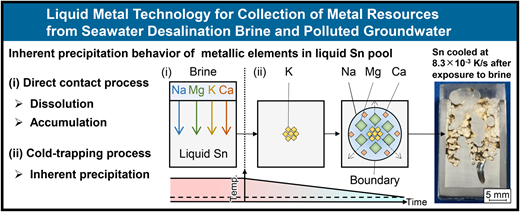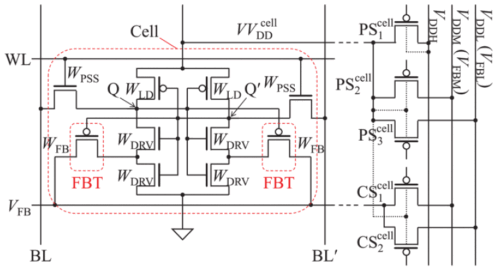2025-04-23 東京科学大学
<関連情報>
- https://www.isct.ac.jp/ja/news/4ibne3akpqqd
- https://www.isct.ac.jp/plugins/cms/component_download_file.php?type=2&pageId=&contentsId=1&contentsDataId=1406&prevId=&key=99f31eada9adb92309283c17e6ceafd0.pdf
- https://iwaponline.com/jwrd/article/15/1/109/107206/Liquid-metal-technology-for-collection-of-metal
海水淡水化塩水および汚染地下水からの金属資源回収のための液体金属技術 Liquid metal technology for collection of metal resources from seawater desalination brine and polluted groundwater
Toranosuke Horikawa;Mahiro Masuda;Minho Oh;Masatoshi Kondo
Water Reuse Published:February 26 2025
DOI:https://doi.org/10.2166/wrd.2025.100
ABSTRACT

The collection of metal resources from seawater desalination brine is a promising technology to achieve a sustainable developing society. The production of freshwater from groundwater polluted by arsenic (As) has potential to satisfy huge water demand. However, conventional methods require large energy consumption and treatment of contaminated wastes. The present study proposes the application of liquid metal tin (Sn) for collecting metallic elements such as sodium (Na), magnesium (Mg), potassium (K), calcium (Ca) and As from the brine and polluted groundwater, in which any waste is not released. The metallic elements were accumulated in liquid Sn pool in the direct contact distillation process of the brine. Each metallic element possessed its own solubility in liquid Sn, which was functioned with the liquid temperature in the range of 505–573 K. K started to precipitate at the early stage and the growth immediately stopped. In the same time, Na started to precipitate and gradually grew. Ca started to precipitate and the growth immediately stopped after K did. Mg could gradually grow. The purification of the polluted water was performed by direct contact reaction between As-polluted water and liquid Sn. The polluted water was efficiently distilled since As was captured by liquid Sn.
HIGHLIGHTS
- Liquid Sn technology was newly applied for the collection of metallic elements contained in seawater desalination brine.
- Na, Mg, K and Ca were separately precipitated in liquid Sn during the slow cooling process.
- As-polluted water was purified by the distillation on liquid Sn at low temperature.



